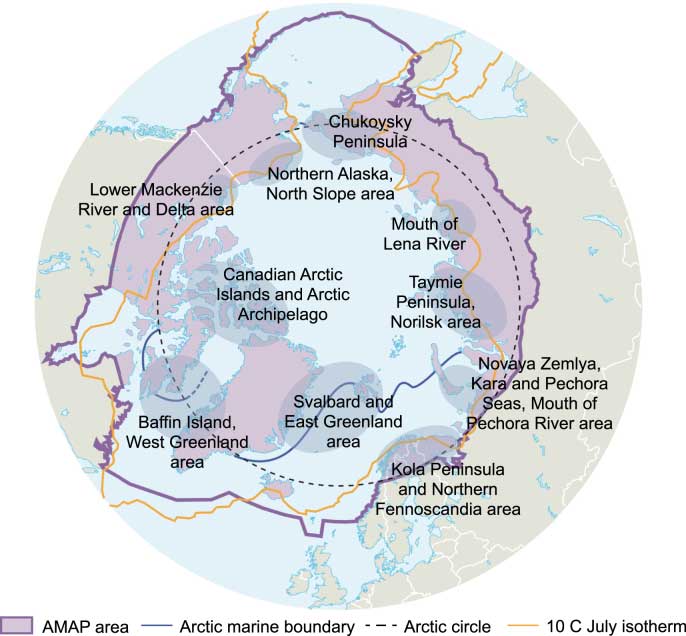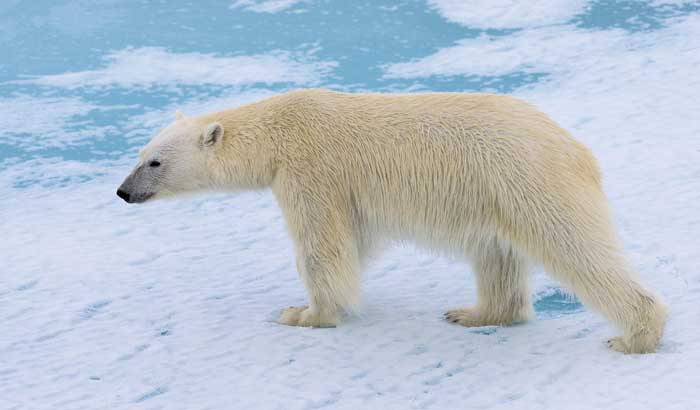During the Fukushima nuclear accident on March 11, 2011, radioactive material was released into terrestrial, marine, and freshwater environments. Some of the airborne contaminants were deposited on land areas of Japan through precipitation, while most of the remainder fell over the North Pacific Ocean. Less than 2% of the total fallout was deposited in areas outside Japan.
Specifically, the radionuclides emitted into the atmosphere from the Fukushima nuclear disaster were rapidly dispersed around the northern hemisphere, reaching as far as the Arctic within a couple of weeks of the accident. While the quantities of radioactive particles observed in the atmosphere of the polar regions had minimal environmental or health effects, their detection in areas over 6,000 kilometers away from the emission source highlights the extensive and swift transport of airborne radionuclides across vast distances.

It is worth mentioning that before the 2011 Fukushima accident, the Arctic atmosphere was virtually free from artificial radionuclides. This is surprising considering the amount of artificial radioactivity transported to the region during the nuclear era that followed World War II.
Indeed, the region has witnessed significant activity during the latter half of the 20th century. The Soviets conducted over 90 nuclear weapons tests at the Novaya Zemlya nuclear test site. In 1961, they detonated “Tsar Bomba,” a 50-megaton thermonuclear aerial bomb, which remains the most powerful atmospheric nuclear test in history. The radioactive contamination of the Arctic region was further exacerbated by numerous accidents involving nuclear-powered vessels, such as icebreakers and submarines, as well as the disposal of spent nuclear fuel. Additionally, liquid and atmospheric emissions from British, French, and Russian nuclear fuel reprocessing sites contributed to the nuclear pollution in the region. During the 1950s and 1960s, the Soviet Union had been dumping nuclear waste and used reactors into the Arctic Ocean. In 1986, the radioactive fallout from the Chernobyl nuclear accident, the largest known release of radioactivity into the environment, extended from Eastern Europe to Sweden and Norway.
Despite decades of abuse and neglect by nuclear powers, the Arctic remains pristine and largely untouched by human civilization and industrial development. A 2015 assessment by the Arctic Monitoring and Assessment Programme (AMAP), a working group of the Arctic Council, concluded that levels of anthropogenic radioactivity in the Arctic are generally very low and declining.■
Sources
- Paatero, J., Vira, J., Siitari-Kauppi, M., Hatakka, J. (2012). Airborne fission products in the high Arctic after the Fukushima nuclear accident. Journal of Environmental Radioactivity, Volume 114, December 2012, 41-47.
- Stohl, A.; Seibert, P.; Wotawa, G.; Arnold, D.; Burkhart, J. F.; Eckhardt, S.; Tapia, C.; Vargas, A.; Yasunari, T. J. (1 March 2012). “Xenon-133 and caesium-137 releases into the atmosphere from the Fukushima Dai-ichi nuclear power plant: determination of the source term, atmospheric dispersion, and deposition”. Atmospheric Chemistry and Physics. 12 (5): 2313–2343.
- UNSCEAR. (2020). Report on Radiological Consequences from the Fukushima Accident: 10 Years Later. United Nations Scientific Committee on the Effects of Atomic Radiation.
- Fukushima: Radiation Exposure | World Nuclear Association
- International Atomic Energy Agency. (1996). One Decade After Chernobyl: Summing up the Consequences of the Accident. Proceedings of an International Conference. Vienna, 8-12 April 1996. STI/PUB/1001. IAEA. 555 p. ISBN 92-0-103796-1.
- AMAP, 2015. Summary for Policy-makers: Arctic Pollution Issues 2015. Arctic Monitoring and Assessment Programme (AMAP), Oslo, Norway. 12 pp.
- Reiersen, L., Vorkamp, K., Kallenborn, R. (2024). The role of the Arctic Monitoring and Assessment Programme (AMAP) in reducing pollution of the Arctic and around the globe. Environmental Science and Ecotechnology. Vol. 17, January 2024.
- Macdonald, R.W., Harner, T., Fyfe, J., Loeng, H., Weingartner, T. (2003). AMAP Assessment 2002: The Influence of Global Change on Contaminant Pathways to, within, and from the Arctic. Arctic Monitoring and Assessment Programme (AMAP), Oslo, Norway. xii+65 pp.
- Are we prepared for a radiation emergency in the Arctic? | Arctic Council
- Cover image: “Polar Bears on Thin Ice” by Christopher.Michel on Openverse.org / CC BY 2.0 / Cropped.



Leave a comment